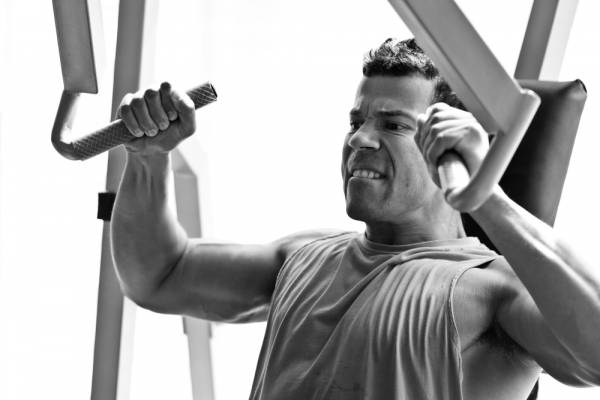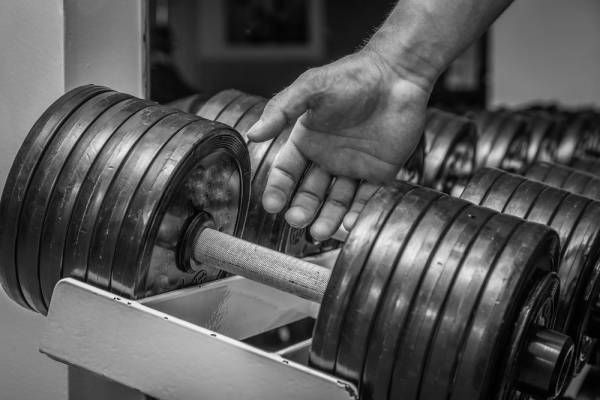Admit it. Most of us seek a better physique. Maybe you’re already there and satisfied. If so, read what follows to validate what you did to get there. It will reinforce what you’ll need to keep doing to maintain it.
If you’re not satisfied with your body, be honest and ask yourself, “Have I truly taken the proper steps to achieve my goal?” If not, the following five tips can help you get on the right track and make your training time more productive.
#1: Know Your Genetics
Your genetic make-up – your body type – impacts your intentions. Often it can be unkind.
- Bone length factors – torso, upper leg, lower leg, and arms.
- Muscle size, origin, and insertion factors – long or short muscle bellies and where they attach to your skeleton.
- Width/girth factors – the width of your hips and shoulder girdle, and rib cage protrusion. Girth-wise, factor in your hips, lower torso (abdominals), and upper torso (chest) in combination with your existing muscle mass.
If you’re naturally tall and skinny, it will be a steep climb to build a lot of muscle mass.
If you’re wide at the lower torso and narrow at the shoulders, you can probably rule out the V-shape in your upper body. If you’re a long femur/short torso person, good luck with safely squatting through a full range of motion. If you’re a female with narrow hips and a flat tush, it’s highly unlikely you’ll achieve a bubble-booty like a certain pseudo-celebrity who is always in the news.
You may be tall, short, or average in height. You may possess a pear-, apple-, cucumber-, or hour glass-figure. Whatever you have, you can alter your body composition (muscle-to-fat ratio), but only within the confines of the genetically inherited factors noted above.
#2: Work Hard
It’s sad that this even needs to be discussed, but some still don’t get it. To make any physical change hard effort is a requirement. Going through the motions with questionable physical effort will not amount to much. Exercise should be demanding. Take out the ear buds and turn off the television. Focus on going all out.
- Don’t shy away from those last few difficult repetitions in a set if you can safely do them. Those extra few seconds could be the difference between an effective overload stimulus and something less than that.
- Run or work harder in your drill or event. Push yourself within reason. Remember, it’s a meaningful exercise event.
- Adjust your intensity variables. Add volume, lower the rest time, and increase effort in some capacity within training. This advice may generic, but it’s important to progressively make your training more demanding.

#3: Shore Up Your Nutritional Intake
What you eat and drink is huge. Some of it is calories in versus calories out. Some of it is the proper balance of the macronutrients carbohydrates (carbs), fats, and proteins consumed. Some of it is the type of calories consumed: High glycemic versus low glycemic carbs. Saturated, polyunsaturated versus unsaturated fat. Whey versus casein protein. All of those can impact your training goals.
In pursuing your nutritional intake, keep in mind tip number one. What is the magnitude of measurable alteration you can make within your body type? And then, what nutritional strategies can you use to lose body fat and increase muscle mass?
We live in world where calories are plentiful and economically available in the free world. Add to that the food manufacturers’ goal of producing products that are tasty and addicting, but nutritionally questionable, and overconsumption of calories can become the rule. The end result of this low-nutrient calorie hoarding over time is excess adipose fat storage.
Fat is not sexy, but muscle is. Trying to build muscle and get stronger? Lift hard and eat. A calorie deficit is not ideal in this attempt. You’ll need a surplus of calories that will go toward fueling your workouts and building new tissue. You may acquire a bit of fat along the way, but at the least you’re assuring the goals of muscle growth and strength are met.
If your goal is to become muscular and leaner concurrently, it’s a steep climb near the end. The closer you approach minimal body fat (males < 5% and females <12%), the more your body rejects weight loss. The natural instinct is to burn muscle and preserve some body fat for the future.
#4: Have a Plan for Your Goal
Do you want to get stronger? There is a plan for that. Improve your cardiovascular endurance? There is a plan for that. Eliminate body fat? There is a plan for that.
Don’t just aimlessly “work out.” Have a structured plan aimed directly at your goal. Ask yourself these questions:
- Am I training consistently?
- Am I training hard and resting hard?
- Am I methodically increasing the difficulty of my workouts over time?
- Am I eating and sleeping properly to recover from my workouts?
- Am I documenting all my numbers for future planning?
Keep it simple. Reducing body fat is about lowering caloric intake and using appropriate exercise that taps into your stored (pinchable) fat. Reduced calorie intake coupled with short-term, balls-out workouts fit this formula. Plug them in.
Want to get stronger? Again, a simple approach applies. Bust your ass on exercises that address the entire body. Don’t skip lower body workouts. If you’re repeating the same workouts with the same exercise prescriptions or not being consistent, you’ve failed to plan.

#5: Understand the Cardio Thing
I’ve discussed this before. Coach Mike Samuels discussed it as well. Anything that elevates and sustains the heart rate can be used to develop cardiovascular fitness. No, you don’t have to go for a track run or mount an elliptical machine for an hour.
For the fat-loss seeking crowd, there’s a misguided notion that aside from their resistance training efforts, they must complete a separate cardio session. That is not true on two accounts:
- Resistance training in conjunction with a calorie deficit can lead to fat loss.
- You don’t need to do any extra activity to lose fat provided that calorie deficit is present, all other factors being equal.
But it is wise to resistance train to at least preserve muscle mass in the wake of fat loss. Also, increasing energy expenditure via any type of exercise is better than doing nothing at all.
If your resistance training is the run-of-the-mill do a set, rest five minutes, do another half-assed set, take another long rest, and so forth, then yes, you could do more to increase your energy expenditure in as much as exercise contributes to that. Remember, it’s muscle demand that triggers and increased heart rate. Place more demand on your muscles and the heart rate goes up.
You can get your “cardio” in the weight room this way:
- High rep squats or deadlifts. 20 to 30 safe, all-out reps will get your heart thumping.
- Super sets, back-to-back-to-back exercises, and circuits. Go from one exercise to the next with minimal rest time. High muscle demand = increased heart rate.
- Toss in some intervals between exercises. 20 burpees, 150 mountain climbers, 6 x :30 work/:20 rest on an exercise machine or body weight exercise. Choose one and do it.
- High rep upper body protocols will do the same, especially with minimal rest between exercises. Perform a chest press, low row, overhead press, and pulldown exercise for 15+ repetitions with minimal rest between each movement. Repeat that sequence for two or three rounds. Your heart rate will skyrocket. No running, just lifting – it’s “cardio.”
Heed the aforementioned five tips. Either you have followed them or you need to get on board. Five more tips will be discussed in my next installment.
Photos courtesy of Shutterstock.






